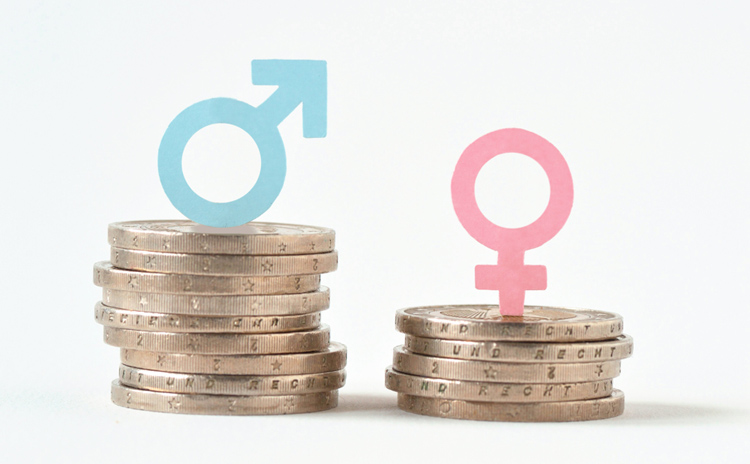Pay gap has widened for male and female partners in larger law firms, new report says

Image from Shutterstock.com.
The pay gap between male and female partners is growing, partly because compensation for male partners is increasing at a faster rate than that of female partners, according to a report by legal recruiting firm Major, Lindsey & Africa.
In 2010, female partners at larger law firms earned an average of 24% less than their male counterparts, according to the retrospective report released Tuesday. By 2018, the gap had widened, with female partners making 35% less than male partners.
During that same eight-year period, average male partners’ compensation grew 42%, compared to 22% for female partners.
The 2018 findings are based on a survey of nearly 1,400 partners among the nation’s largest and highest grossing law firms, taken by Major Lindsey and its research partner Acritas. The new report compares partner compensation in 2010 with latest survey results from 2018.
A Sept. 15 press release is here; Law360, Bloomberg Law and Law.com have coverage.
Jeffrey Lowe, the global practice leader of Major Lindsey’s law firm practice, told Law.com that the gender pay gap disappears when originations and billing rates are taken into account. But that points to another problem, he said.
“Why are female partners originating such a smaller percentage than men?” Lowe asked in the Law.com interview. “Is it still the old boys’ network, and women are being steered to lower rate work? As the husband of a lawyer, in the early years we had very different experiences, and there are so many systemic problems related to different genders coming into this job.”
The report also found:
• The pay gap between equity and nonequity partners is widening. In 2010 equity partners earned, on average, 59% more than nonequity partners. In 2018, equity partners earned 67% higher average compensation than nonequity partners.
• Partners who made a lateral move at some point in their careers make 20% to 30% more than those who never moved. In 2018, the median compensation for partners who made a lateral move was $625,000, compared $475,000 for those partners who never moved. Female partners who made a lateral move got an even bigger boost, earning 40% higher median compensation than those who never moved.
• Average partner compensation has increased 38% from 2010 to 2018, which is 1.5 times faster than the national wage index. Average partner compensation was $885,000 in 2018, while median compensation was $575,000.
• The increase in partner compensation varies when broken down by race and ethnicity. Compensation of Black partners fell slightly between 2010 and 2018, while compensation of Latino and Asian Pacific partners increased by 46% and 44%, respectively.



